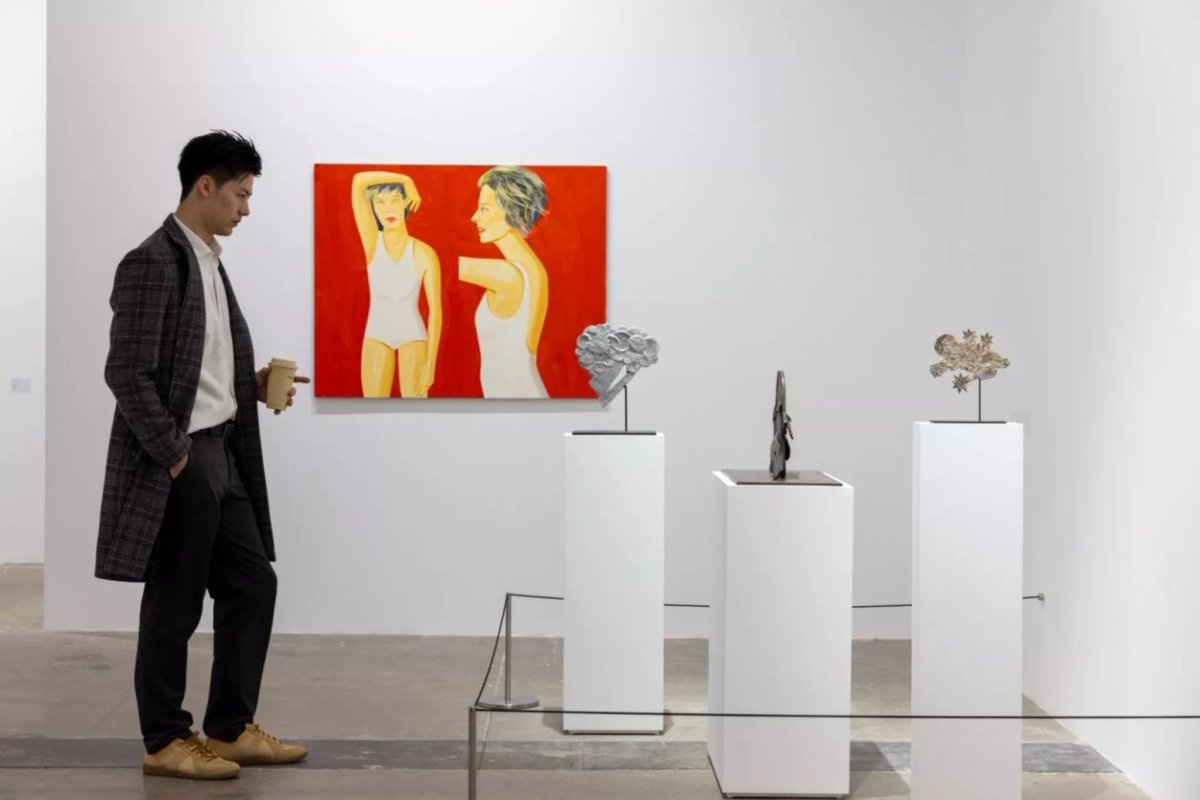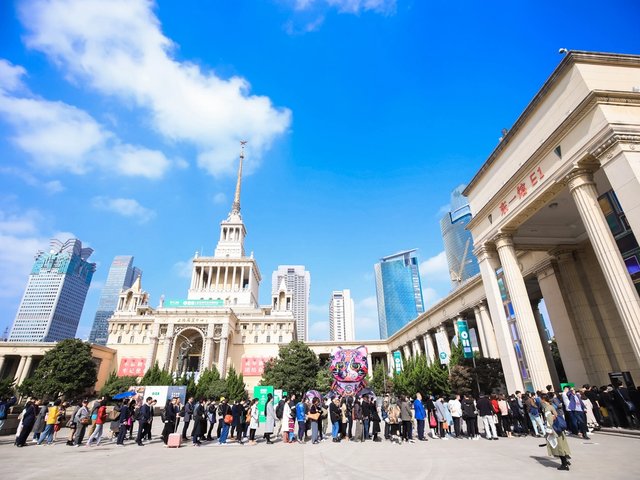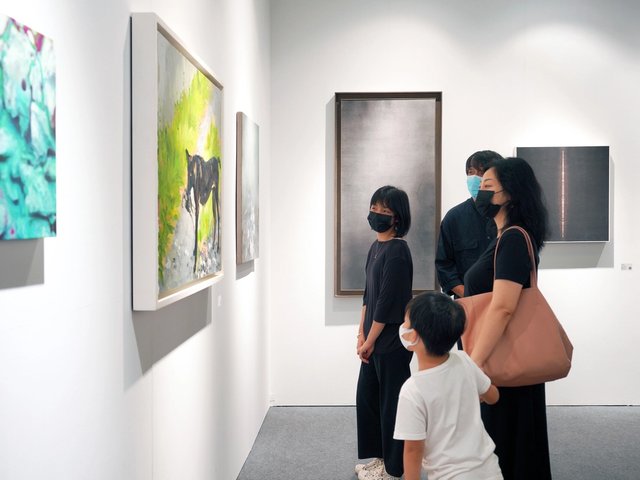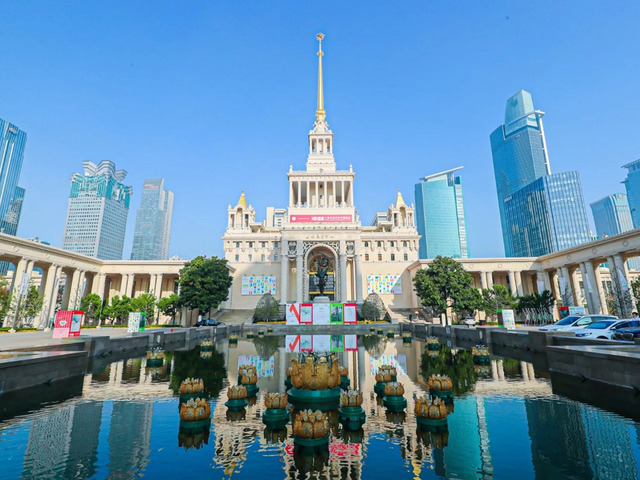This year's edition of Art021, Shanghai’s massive November art week, had the energy of a sophomore outing rather than an event founded in 2000. Last year, the city exploded back into action after three years of closed borders and the disastrous mid-fair shutdowns in 2022 due to the Zero Covid-19 policy. And although the Chinese economy is still struggling, such factor can only dent the determination of the primary art season of the world’s second largest art market, which continues to reinvent itself, and to impress with its breadth.
“Shanghai’s role as the key indicator of the art market in mainland China is definitely crucial to the Asian art ecosystem,” says Alex Chan, who founded Hong Kong gallery The Shophouse in 2020. Mainland collectors “now are more mature and knowledgeable, and have the taste to select good-quality works that are not only beautiful visually, but also values the stories and concepts behind them”.
Chan this year joined both of the major fairs that centre Shanghai Art Week, West Bund Art & Design and Art021 (both 7-11 November), calling them “an excellent observation experience” for understanding mainland audiences. “Galleries in globalised cities like Shanghai and Hong Kong collaborate with each other all the time,” he says. “We always feel that we belong to the same community.”
The week also brought the opening of a new branch of Ho Chi Minh City’s Vin Gallery and several pop-ups. Most notably, New York's Paula Cooper Gallery took over a three floor, 1941 heritage villa downtown for Resonance (until 26 December), an exhibition of 15 of the gallery’s artists, including Meg Webster and Carl Andre.
“Shanghai is currently rebuilding its confidence in the post-Covid era,” says Cara Kai Zhuang, Paula Cooper’s director, Asia. “Despite these challenges, I am confident that it will continue to be one of the most important art markets and meeting points in Asia for the long term.” The project has placed works by Mark di Suvero and Dan Walsh, and overall prices range from $10,000 to $1.2m.
Vin, a 16-year stalwart of Vietnam’s art scene, opened its Shanghai location next to the Power Station of Art, showing the Japanese artist Yohei Yama (until 20 January). Founder Shyevin S’ng decided to expand to China, which “is simply where our client base is,” and found Shanghai “much more suitable for us, because of the international approach of the city”. After joining various other Asian fairs, S’ng found the Chinese market most receptive “to other countries’ artwork”.
Southeast Asian art is particularly visible in Shanghai this year, including a group show of artists mostly from that region at ShanghArt (until 5 January 2025), curated by Philippe Pirotte. Opening with a performance by Indonesia’s Melati Suryodarmo, the project in the gallery’s new space in a West Bund luxury mall includes sharp pieces like Arin Rungjang’s They Beat Your Father (2019), about anti-migrant hate crime in Germany.
It shows a larger shift from decades of Shanghai’s cultural xenophilia extending mostly to established white male established artists. In December, the Hanoi- and New York-based nonprofit Vietnam Art Collection (VAC) will launch a Shanghai space in the Baoshan suburb. Organisers envision Shanghai as a foothold for promoting Vietnamese artists to the rest of East Asia.
At Art021, the first-time participant Micki Meng Gallery, from San Francisco and New York, presented the Los Angeles-based Philippines artist Miljohn Ruperto’s series of films and photographs about the actress Isabel Rosario Cooper. The trailblazing Filipina became the mistress of the American military general Douglas MacArthur’s when she was 16 and he was 50, and the relationship derailed her life in a tragic colonial tale of racial and gender exploitation. Sales were “primarily focused on institutions”, says gallery founder Meng, who found the fair “very lively”.
Art021 this year featured 109 galleries, including blue chip dealers like David Zwirner and White Cube, which also joined West Bund. West Bund’s 121 galleries included other big names like Hauser & Wirth and Lehmann Maupin. West Bund’s spokespeople emphasised China’s return to second place in the global art market despite the weak economy, now 19% according to the 2024 Art Basel and UBS Survey of Global Collecting. Art sales have risen by 9% to about $12.2bn.
The West Bund team echoed that local collectors are “making more diverse choices” and becoming “increasingly mature and patient.” They say sales priced from 100,000 Chinese yuan and up were made for big names like Philip Guston, Lee Ufan and Yoshitomo Nara, as well as an increasing proportion of female artists such as Etel Adnan, Tracey Emin, and Yin Xiuzhen, who currently has a solo presentation at the Power Station of Art (until 16 February).
Due to visa complexities and prevailing cultural and geopolitical differences with the West, China can feel like its own separate world. The coincidence of Shanghai art week with Art Week Tokyo this year exacerbated that distance, though the West Bund team asserts that the clash caused no decline in collectors. Complaints were common also about the two fairs’ shared opening day and time, instead of the usual staggering by one day.
Around 100 events around town accompanied the fairs, with the Suzhou Creek area, home to museums UCCA Edge and Fotografsika and a number of galleries, particularly ramping up its offerings. While West Bund’s gallery cluster now sits half-demolished next to the fair halls, the nonprofit Pond Society has taken residence in the building that previously housed the Shanghai Centre of Photography (SCoP). Nearby, the Pompidou x West Bund Museum opened Another Avant-Garde: Photography 1970-2000 (until 16 February 2025). On the Bund, the Rockbund Art Museum featured Rindon Johnson’s Best Synthetic Answer (until 6 April 2025) paired with a vintage hotel-themed soiree that could almost rival the annual bash at Prada Rongzhai.
Shanghai art week lacks the capital A and W of most of Asia’s calendar of art weeks. While starting from the first international edition of the Shanghai Biennale, and expanding after the 2007 launch of a first contemporary art fair Sh Contemporary, Shanghai’s week while now massive has no overarching coordination. Every night, events explode all over the metropolis, with geographic hard choices aplenty. Chaos is part of the Shanghai charm.





